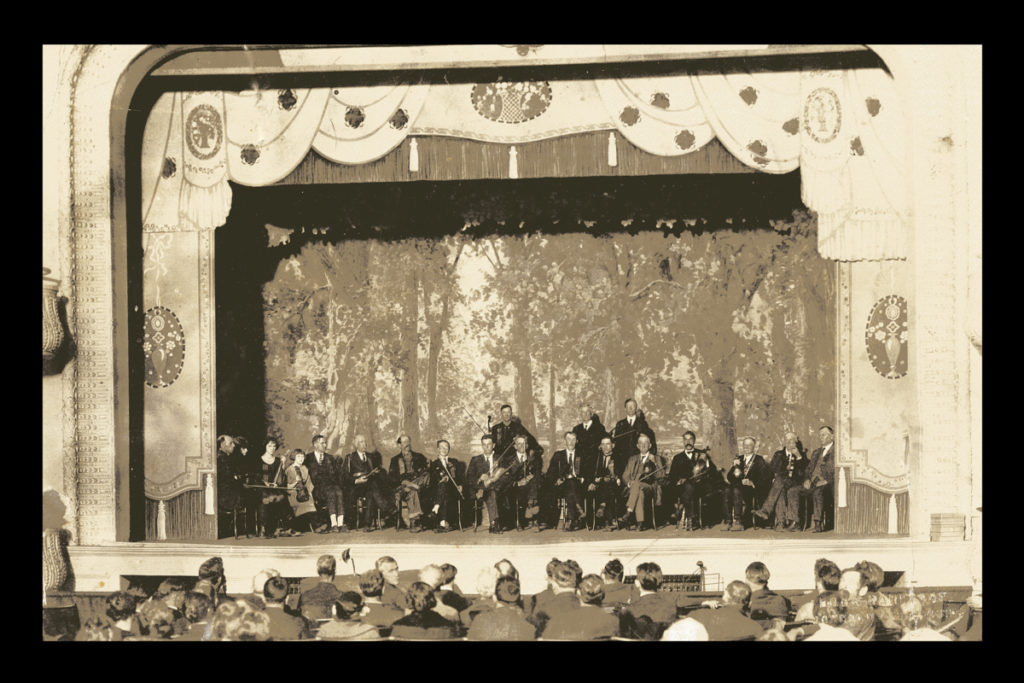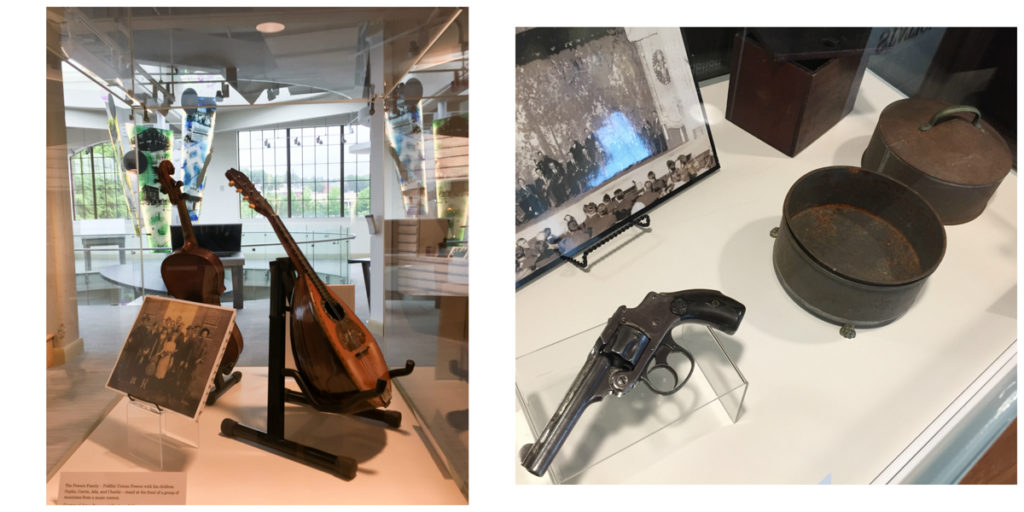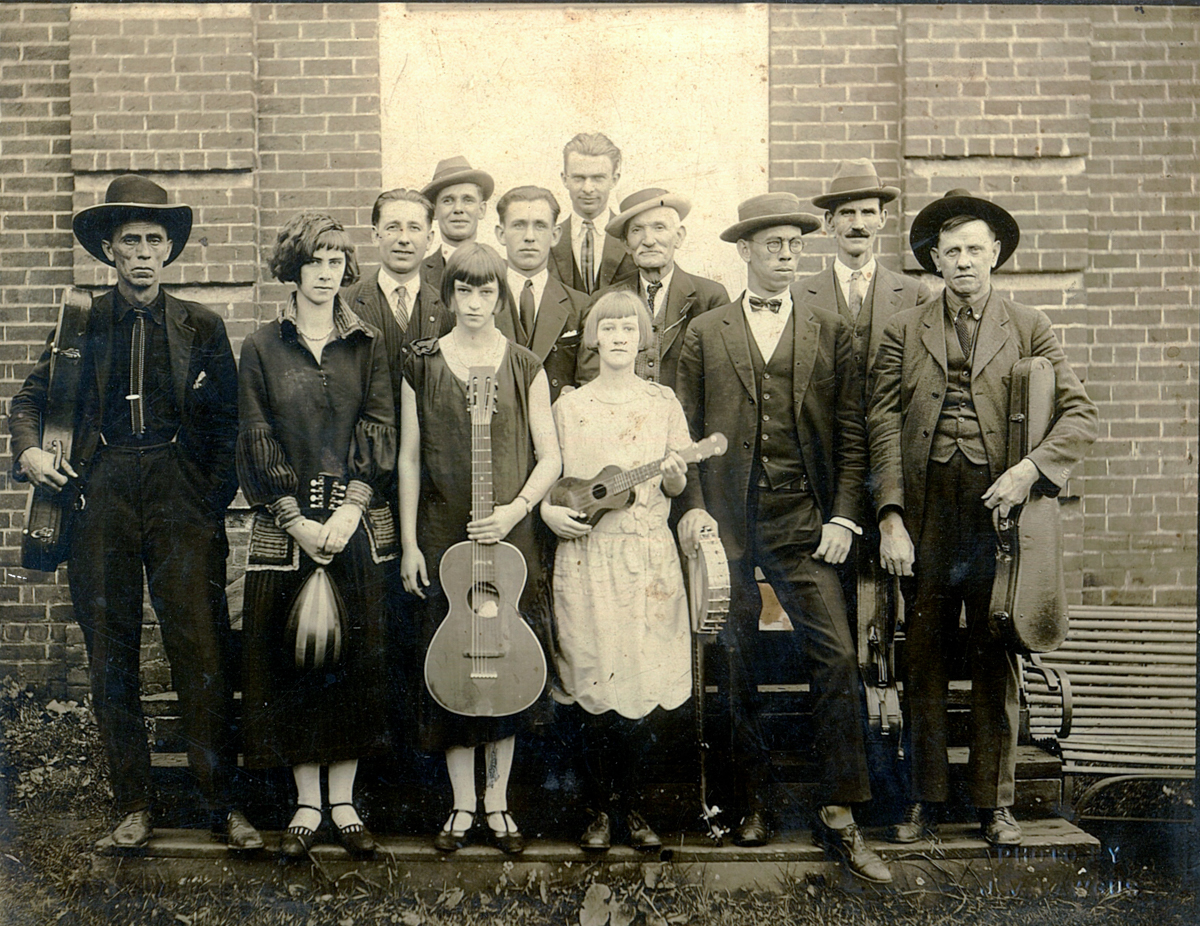Back in the early 1920s, there was a quest for “hillbilly music.” A&R men – A&R stood for artists & repertoire – were heading out of their studios in New York and other big cities to find recording talent that played the traditional music they knew would sell.
And there were plenty of musicians who were ready to play their tunes into the acoustic horn (and later the electric microphone) and lend their music and voices to a cylinder or 78 recording that carried that tune to others. One of those artists was Fiddlin’ Cowan Powers, who led The Powers Family, hailed as the first family string band to be commercially recorded.

Fiddlin’ Cowan Powers was born James Cowan Powers in October 1877 in Russell County, Virginia (as with many old-time musicians, birth dates vary depending on the source; I’ve also seen 1879). He married Matilda Lambert, and they had four children together. Powers was a musician, and he also worked the land and as a carpenter and leather worker – making leggings and underarm holsters, amongst other things.
With a father who played fiddle and a mother who played banjo, it was inevitable that the children would also play a host of instruments: Charlie on banjo, Orpha on mandolin, Carrie on guitar, and Ada on ukulele. After Matilda died in 1916, Powers looked to music as a profession and took his children on the road with him as members of the family string band.
The Powers Family first made their mark in a Johnson City, Tennessee, music competition in the early 1920s. They were soon traveling around southwest Virginia, northeast Tennessee, and neighboring states, performing at a variety of stage shows and dances, and also playing in fiddle and music competitions. James Powers, youngest son of Fiddlin’ Cowan Powers, tells us that he found around 25 $10 gold coins in his father’s belongings after he passed, all winnings from fiddle contests. The band also played on local radio stations, including WOPI in Bristol, Tennessee-Virginia.

After the Johnson City competition, a Victor Talking Machine Company representative singled The Powers Family out, asking them to do a test field recording. Their stint behind the mic impressed, and in August 1924, they rode the train up to the Victor studio in Camden, New Jersey, and made their first commercial recordings. In all, The Powers Family recorded 17 songs over two days there, including “The Little Old Cabin in the Lane,” “Sour Wood Mountains,” “Sallie Goodin,” and “Cripple Creek.”
In 1925, The Powers Family recorded for the Edison label in New York City – performing several of the same songs recorded with Victor – and then in September 1928, they recorded six sides for the OKeh company. One of the recordings for OKeh was “Old Virginia Reel,” which was unusual in its length – around six minutes – and thus divided into two parts, one on each side of the 78 record. This piece also features each member of the family performing solo, highlighting the band’s individual talents and personalities. Part 1 of “Old Virginia Reel” starts off with a “master of ceremonies” saying:
“Folks, we’re goin’ to have a real old-time square dance. And while the crowd is gathering and everybody getting their partners, we will have a little rehearsal by Fiddlin’ Powers and Family. First, Miss Orpha with the mandolin…”
Orpha was followed by her brother and then her sisters, each playing their own instruments. Fiddlin’ Cowan Powers – with the anonymous emcee calling him a “fiddlin’ ace” – came next with his version of “Buck Creek Girl,” and then Part 1 ended with a harmonica player. Part 2 brought the whole string band together to play a selection of dance tunes. One can imagine that this recording – the last of The Powers Family’s career – was a pretty good rendition of what a live Powers Family show would have been like.
Photographs of Fiddlin’ Cowan and his children show a very serious-looking bunch – they stare out at the camera with dark eyes and rarely a smile. But from the stories told to us by the family and accounts from those who remember their performances, we know that a Powers Family show was filled with jokes and laughter, a variety of magic tricks performed by Fiddlin’ Cowan Powers, and clog and buck dancing by little Ada. And also sometimes a bit of drama: another family story tells us that Powers shot a man in the leg at one of their shows after the man got fresh with one of his daughters. The man wasn’t killed, but he surely learned a lesson, and Powers had to pay a fine of around $1,000 dollars for his paternally protective action.

The Powers Family stopped performing together in the 1930s when the children began to marry. Cowan Powers continued to play his fiddle with other groups, including the Stanley Brothers, until his death in 1953; the story goes that he died of a heart attack while playing “Cluck Old Hen” on stage at a Stanley Brothers show. Son Charlie had enlisted in the United States Air Corps in the late 1920s, and he passed away in 1942 in a Japanese prisoner-of-war camp. Daughters Orpha, Carrie, and Ada (now playing the autoharp rather than the ukulele) came back together, along with Orpha’s husband Eugene Ireson, as a band, in the 1970s. They performed on local radio and television, and at a number of festivals in the region. Later, after Orpha’s health affected her ability to travel and perform, Carrie and Ada continued together as a duo.
The story of the Powers Family and their music underlines their place as pioneering figures in the history of early commercial country music. They made their mark as the first family string band to record commercially when they took that train up to New York City to record for Victor. And their performance of “Old Virginia Reel” – with Part 1 showcasing each musician on their respective instrument and Part 2 featuring their performance of popular string band tunes – underlined the level of talent in each member of the family and the harmony and energy of the music when they came together.
Most importantly, the memory of The Powers Family and their place in music history is being carried on by their descendants, and luckily for us, shared with the museum and our visitors through objects, stories, and photographs.
René Rodgers is Curator of Exhibits & Publications at the Birthplace of Country Music Museum.


